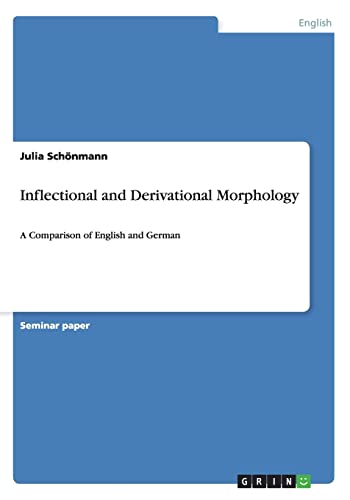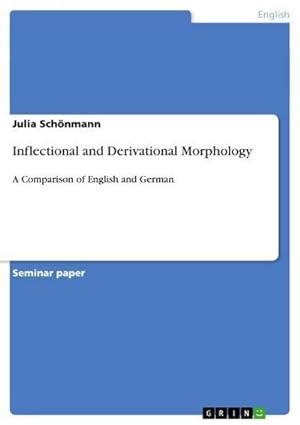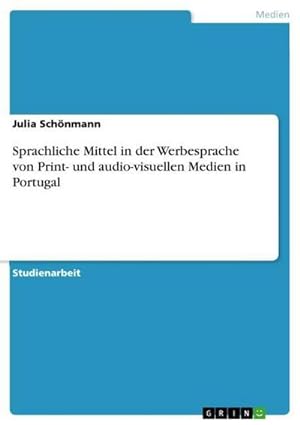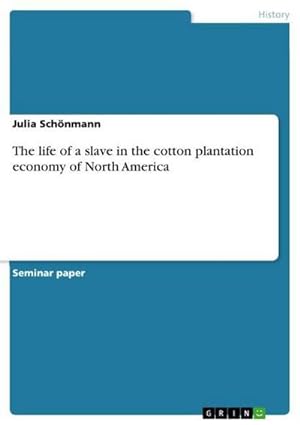schönmann julia (5 Ergebnisse)
Produktart
- Alle Produktarten
- Bücher (5)
- Magazine & Zeitschriften
- Comics
- Noten
- Kunst, Grafik & Poster
- Fotografien
- Karten
-
Manuskripte &
Papierantiquitäten
Zustand
Einband
- alle Einbände
- Hardcover
- Softcover
Weitere Eigenschaften
- Erstausgabe
- Signiert
- Schutzumschlag
- Angebotsfoto (4)
Gratisversand
Land des Verkäufers
Verkäuferbewertung
-
Inflectional and Derivational Morphology: A Comparison of English and German
Verlag: Grin Verlag, 2014
ISBN 10: 3656656037ISBN 13: 9783656656036
Anbieter: medimops, Berlin, Deutschland
Buch
Befriedigend/Good: Durchschnittlich erhaltenes Buch bzw. Schutzumschlag mit Gebrauchsspuren, aber vollständigen Seiten. / Describes the average WORN book or dust jacket that has all the pages present.
-
Inflectional and Derivational Morphology : A Comparison of English and German
Verlag: GRIN Verlag, 2014
ISBN 10: 3656656037ISBN 13: 9783656656036
Anbieter: AHA-BUCH GmbH, Einbeck, Deutschland
Buch
Taschenbuch. Zustand: Neu. Druck auf Anfrage Neuware - Printed after ordering - Seminar paper from the year 2014 in the subject English Language and Literature Studies - Linguistics, grade: 1,7, University of Heidelberg (Institut für Übersetzen und Dolmetschen), language: English, abstract: Generally, Kortmann defines Contrastive Linguistics as the parallel comparison of two languages concerning their language parameters. According to him, it is especially important to identify separate bundles with structural differences and find the relation between them, the so-called 'Kontrastbündel' (contrast bundles). Each one of these bundles can be deduced from the construction plan of the contrastive language.In this regard, Kortmann starts his analysis by comparing his purpose of Contrastive Linguistics to its original use. He refers to the fact that in the early 40s till 60s these language differences were considered the reason for the problems occurring when learning a foreign language. Hence, Contrastive Linguistics was primarily important for pedagogical use. The systematic comparison of two languages was supposed to improve the learner's and teacher's understanding of the foreign language by for example predicting mistakes often made. In this context, Kortmann sees the previously mentioned Contrastive Hypothesis from Lado as a good explanation for the main factors which trigger contrasts. The Contrastive Hypothesis indicates that similarities between the native language (L1) and the foreign language (L2) lead to an easy and fast learning process whereas differences lead to difficulties and are the main reason for making mistakes. Thus, the basic idea of the Contrastive Hypothesis is the transfer of the characteristics of the native language to the foreign language. Depending on whether this transfer promotes or represses the learning process, it is considered a positive or negative transfer. A negative transfer is also referred to as interference. The most important types of interference are substitution (1), over-differentiation, under-differentiation, over-representation and under-representation (2). Here, Kortmann comments that according to this basic assumption of Contrastive Linguistics only substitution, over-differentiation and under-differentiation can trigger mistakes.
-
Sprachliche Mittel in der Werbesprache von Print- und audio-visuellen Medien in Portugal
Verlag: GRIN Verlag, 2014
ISBN 10: 3656655235ISBN 13: 9783656655237
Anbieter: AHA-BUCH GmbH, Einbeck, Deutschland
Buch
Taschenbuch. Zustand: Neu. Druck auf Anfrage Neuware - Printed after ordering - Studienarbeit aus dem Jahr 2013 im Fachbereich Medien / Kommunikation - Public Relations, Werbung, Marketing, Social Media, Note: 1,7, Ruprecht-Karls-Universität Heidelberg (Institut für Übersetzen und Dolmetschen), Sprache: Deutsch, Abstract: Werbung ist zwischenzeitlich zu einem festen Bestandteil unseres Lebens geworden. Sie ist ein permanenter Begleiter unseres Alltags. Wenn wir zur Arbeit fahren, hören wir der Reklame im Radio zu. Sie begegnet uns auf Bushaltestellen, Autos und winkt uns von den Wolkenkratzern zu. Der 20.15 Uhr Film vor dem Schlafengehen wird pünktlich alle 30 Minuten durch verlockende Angebote unterbrochen und öffnen wir eine Seite online, taucht zugleich ein Pop-up Fenster auf. Die Werbung gewinnt immer mehr an Bedeutung und Vielfältigkeit.Auch die Politik beschäftigt sich mit gesetzlichen Regelungen und Einschränkungen, die Unternehmen kümmern sich um die Vermarktung ihrer Produkte, und die Wissenschaft stellt psychologische Theorien über das Kaufverhalten der Konsumenten auf. Die Anzahl der Publikationen zu diesem Thema steigt mehr und mehr an; ein Trend, dem sich auch die Sprachwissenschaft nicht verschließen kann. Sprache als Werbeinstrument ist zu einem beliebten und interessanten Forschungsobjekt geworden, so auch in Portugal. Genau deshalb habe ich mich für dieses Thema als Hausarbeit entschieden: Sprachliche Mittel in der Werbesprache von Printmedien und audio-visuellen Medien in Portugal.Die Arbeit ist in vier Abschnitte geteilt. Der erste Abschnitt gibt einen Überblick über den Werberahmen. Er beinhaltet eine allgemeine Definition von Werbung und Werbesprache und gibt einen Einblick in die Themen Werbeobjekt, Werbeziele, Zielgruppenbestimmung und Werbemittel und Werbeträger. Der zweite Abschnitt beschäftigt sich mit den klassischen Textelementen von Werbesprache. Hier werden lediglich die Schlagzeile und der Slogan betrachtet und mit Beispielen erläutert. Im dritten Abschnitt dieser Arbeit kommt es dann zu einer ausführlichen Betrachtung der Sprachmanipulation. Hierbei werden die wichtigsten sprachlichen Mittel und Strategien in Headlines und Slogans dargestellt. Abschließend erfolgt ein Fazit.
-
The life of a slave in the cotton plantation economy of North America
Verlag: GRIN Verlag, 2014
ISBN 10: 3656655472ISBN 13: 9783656655473
Anbieter: AHA-BUCH GmbH, Einbeck, Deutschland
Buch
Taschenbuch. Zustand: Neu. Druck auf Anfrage Neuware - Printed after ordering - Seminar paper from the year 2014 in the subject History - America, grade: 1,0, University of Heidelberg (Institut für Übersetzen und Dolmetschen), language: English, abstract: Slavery is a phenomenon which had already been common practice in ancient times and has influenced human history up till today. Historian and author Stanley Elkins compared the practice of slavery in the southern states of the U.S. to 'national socialist concentration camps' (Meißner, Mücke, Weber 120). Unfortunately, it was the sad truth. Slaves were imported from Africa and sold against their will like goods. The sole objective was effective economic exploitation of work force.The purpose of this term paper is to take a closer look and especially illustrate every day hardships of a slave's life on a North American cotton plantation. In this regard, the books Schwarzes Amerika from Meißner, Mücke and Weber, Out of Many from Farager, Buhle, Czitrom and Armitage as well as The Enduring Vision from Boyer, Clark and McNair Hawley serve as a basis for statistics and detailed information.The life of slaves was subject to constantly changing factors which leads to the conclusion that the standard of life was significantly worse on a big plantation than on a small manageable cotton farm. Furthermore, wealth and the plantation owner's character influenced a slave's everyday life as well. Therefore, it is important to keep in mind that not all circumstances and factors applied to every plantation.
-
Catherine Morland. The growth of a heroine¿s mind
Verlag: GRIN Verlag, 2014
ISBN 10: 3656655448ISBN 13: 9783656655442
Anbieter: AHA-BUCH GmbH, Einbeck, Deutschland
Buch
Taschenbuch. Zustand: Neu. Druck auf Anfrage Neuware - Printed after ordering - Seminar paper from the year 2013 in the subject Didactics - English - Literature, Works, grade: 1,3, University of Coimbra (Faculdade de Letras), language: English, abstract: 'No one who had ever seen Catherine Morland in her infancy would have supposed her born to be an heroine' . The first sentence of Jane Austen's novel 'Northanger Abbey' on its own already suggests that Catherine Morland is, or will be, an heroine, but truly an unlikely one. It notes the future gap between the life of an ideal heroine in a novel and the flawed main character. And when thinking of the common meaning of an heroine in gothic novels, one does indeed expect something different than a young lady's troublesome way to maturity. Catherine Morland does not have the childhood of an elegant woman whom is expected to become a heroine. At age 10, she's described as a girl who preferred cricket to dolls and who liked nothing better than rolling down a grass hill. She was never outstandingly good in either her studies or other activities like playing the piano. Her parents were kind and didn't believe in forcing their children to grow up a certain way with defined skills and so Catherine grew up the way she was - not extraordinarily smart or in any way impressive. However, when turning 15, she starts to take more interest in her looks and, more importantly, reading gothic novels which largely contribute to her imagination. Her journey begins when she is asked by Mr. and Mrs. Allen, good friends and neighbors of the Morland's, to accompany them to the city of Bath for a few weeks. Catherine is utterly thrilled with the prospect of finally being able to face the handsome strangers and all the adventures that await outside her homely environment, as she perceives the real world through the eyes of a passionate reader of gothic novels. It is then that she agrees unconsciously to leave the person she is now behind and start growing.






